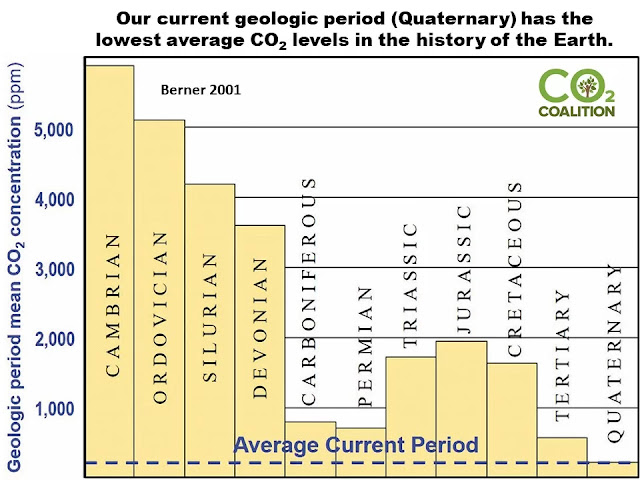Responding to the CO2 Coalition's "Facts #6 and #7" on CO2 Concentrations on Geologic Time Scales
CO2 Coalition's "fact #6" and "fact #7" are essentially identical, and both are largely just a rehash of statements made in previous "facts." Here we're told that "our current geologic period, the Quaternary, has seen the lowest average levels of carbon dioxide since the Precambrian." To support this claim, they took the data from the climate model in Berner 2001 and averaged all the CO2 concentration values for each Geologic period, ignoring the confidence intervals and the length of the period, and plotted the following graph. Note that each geologic period is shown as if they were the same length.
CO2 Coalition's chart is also pretty disingenuous. The Quaternary has lasted only about 2.6 million years, while the Cretaceous lasted 79 million years. It's hardly a valid comparison to treat the Cretaceous and Quaternary equally. In fact, their "fact #7" nicely illustrates how short the Quaternary has been compared to other Geologic periods.
Has there been a Quaternary-length time frame in which CO2 levels dropped below the average CO2 concentrations of the Quaternary? Probably. During the Permian (which lasted 47 million years), CO2 levels dropped to ~100 ppm for about 1 million years in the early Permian and were likely ~200 ppm or lower for a longer period of time. The graph below shows how this time period compares to the range of CO2 values during the Quaternary glaciations (indicated to the right of the graph).

.png)





Comments
Post a Comment